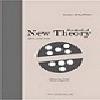Smarandache-Based Ruled Surfaces with the Darboux Vector According to Frenet Frame in E3
Smarandache-Based Ruled Surfaces with the Darboux Vector According to Frenet Frame in E3
___
- [1] P. do-Carmo, Differential Geometry of Curves and Surfaces, Prentice Hall, Englewood Cliff, 1976.
- [2] A. Gray E. Abbena, S. Salamon, Modern Differential Geometry of Curves and Surfaces with Mathematica, Chapman and Hall/CRC, New York, 2017.
- [3] H. H. Hacısaliho ̆glu, Differential Geometry II, Ankara University Press, Ankara, 2000.
- [4] D. J. Struik, Lectures on classical differential geometry, Addison-Wesley Publishing Company, 1961.
- [5] M. Juza, Ligne De Striction Sur Unegeneralisation a Plusierurs Dimensions D’une Surface Regle, Czechoslovak Mathematical Journal 12 (1962) 243–250.
- [6] G. Y. S ̧ent ̈urk, S. Yuce, Characteristic Properties of Ruled Surface with Darboux Frame in E3, Kuwait Journal of Science 42 (2) (2015) 14–33.
- [7] Y. Tun ̧cer, Ruled Surfaces with the Bishop Frame in Euclidean 3 Space, General Mathematics Notes 26 (2015) 74–83.
- [8] M. Masal, A. Z. Azak, Ruled Surfaces according to Bishop Frame in the Euclidean 3-Space, Proceedings of the National Academy of Sciences, India Section A: Physical Sciences 89 (2019) 415–424.
- [9] R. L. Bishop There is More Than One Way to Frame a Curve, The American Mathematical Monthly 82 (1975) 246–251.
- [10] S. Ouarab, A. O. Chahdi, M. Izid, Ruled Surfaces with Alternative Moving Frame in Euclidean 3-Space, International Journal of Mathematical Sciences and Engineering Applications 12 (2018) 43–58.
- [11] S. Ouarab, A. O. Chahdi, Some Characteristic Properties of Ruled Surface with Frenet Frame of an Arbitrary Non-Cylindrical Ruled Surface in Euclidean 3-Space, International Journal of Applied Physics and Mathematics 10 (1) (2020) 16–24.
- [12] M. Turgut, S. Yılmaz, Smarandache Curves in Minkowski Spacetime, International Journal of Mathematical Combinatorics 3 (2008) 51–55.
- [13] A. T. Ali, Special Smarandache Curves in the Euclidean Space, International Journal of Mathe- matical Combinatorics 2 (2010) 30–36.
- [14] S. Ouarab, Smarandache Ruled Surfaces according to Frenet-Serret Frame of a Regular Curve in E3, Abstract and Applied Analysis Hindawi 2021 Article ID: 5526536.
- [15] S. Ouarab, Smarandache Ruled Surfaces according to Darboux Frame in E3, Journal of Mathe- matics 2021 Article ID: 9912624.
- [16] S. Ouarab, NC-Smarandache Ruled Surface and NW-Smarandache Ruled Surface according to Alternative Moving Frame in E3, Journal of Mathematics 2021 Article ID: 9951434.
- [17] ̈O. Bekta ̧s, S. Y ̈uce, Special Smarandache Curves According to Darboux Frame in E3, Romanian Journal of Mathematics and Computer Science 3 (2013) 48–59.
- [18] A. Berk, A Structural Basis for Surface Discretization of Free Form Structures: Integration of Geometry, Materials and Fabrication, PhD Dissertation, Michigan University (2012) Ann Arbor, USA.
- [19] M. C ̧ etin, H. Kocayi ̆git, On the Quaternionic Smarandache Curves in Euclidean 3-Space, Inter- national Journal of Contemporary Mathematical Sciences 8 (3) (2013) 139–150.
- [20] H. Pottmann, A. Asperl, M. Hofer, A. Killian, Architectural Geometry, Bentley Institute Press, Exton, 2007.
- [21] S. S ̧enyurt, S. Sivas, An Application of Smarandache Curve, Ordu University Journal of Science and Tecnology 3 (1) (2013) 46–60.
- [22] J. Stillwell, Mathematics and Its History, Undergraduate Texts in Mathematics, Springer, New York, 2010.
- [23] K. Ta ̧sk ̈opr ̈u, M. Tosun, Smarandache Curves on S2, Boletim da Sociedade Paranaense de Matem- atica 32 (1) (2014) 51–59.
- Yayın Aralığı: 4
- Başlangıç: 2014
- Yayıncı: Naim Çağman
A Generalization of p-Adic Factorial
Smarandache-Based Ruled Surfaces with the Darboux Vector According to Frenet Frame in E3
Süleyman ŞENYURT, Davut CANLI, Elif ÇAN
On the Multiplicative (Generalised) (α, α)-Derivations of Semiprime Rings
Handan KARAHAN, Neşet AYDIN, Didem YEŞİL
Hemant KUMAR, Frederic AYANT, Mahmood Ahmad PATHAN
Mathee PONGKITIWITOON, İbrahim ABDULLAHI, Obalowa JOB
Burak ARSLAN, Samet MEMİŞ, Serdar ENGİNOĞLU, Zeynep Parla PARMAKSIZ
